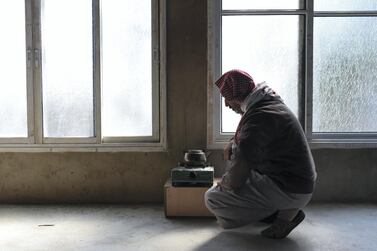Around half of renewable energy capacity added in 2019 was cheaper than the least expensive coal plants, according to the International Renewable Energy Agency.
“Renewable energy is increasingly the cheapest source of new electricity, offering tremendous potential to stimulate the global economy and get people back to work,” said Irena director general Francesco La Camera.
Solar photovoltaic energy saw the steepest declines in cost between 2010 and 2019, declining 82 per cent, while concentrated solar power fell 47 per cent, according to a recent survey by Irena.
Costs of deploying wind projects also fell during this time period, with onshore wind declining 47 per cent, while offshore wind schemes were down by 29 per cent.
"Renewable investments are stable, cost-effective and attractive offering consistent and predictable returns while delivering benefits to the wider economy,” Mr La Camera said.
Post-pandemic economic recovery must be a "green strategy”, with renewables offering a way to align short-term policy action with medium- and long-term energy and climate goals.
Mr La Camera previously called for subsidies to be made available to the clean energy sector as governments injected trillions of dollars into the world economy to tide over the financial shock of the coronavirus pandemic.
Around 1,200 Gigawatts of existing coal-fired power plants could cost more to operate than installing new utility scale PV projects in 2021, the report said.
Replacing the most expensive 500GW of coal capacity with solar and wind energy, can reduce annual system costs by as much as $23 billion (Dh84bn) while also lowering carbon emissions by around 1.8 gigatonnes, the equivalent of 5 per cent of last year’s total.
Cost reductions can yield a stimulus worth $940bn, or around 1 per cent of the world economy's output, Abu Dhabi-headquartered Irena said.
Costs for solar and wind continued to fall year-on-year, according to the report. Electricity costs from utility-scale solar PV schemes fell 13 per cent last year, reaching an average of 6.8 cents per kilowatt-hour. Costs for onshore and offshore wind declined 9 per cent year-on-year.
In April, the bleakest month for global energy demand as the pandemic raged across many countries, a 2GW solar PV scheme in Abu Dhabi received a record-low bid.
Emirates Water and Electricity Company, a subsidiary of the Abu Dhabi Power Corporation, received a cost-competitive tariff of 4.97 fils per kilowatt hour (1.35 US cents/kWh) on the basis of levelised electricity costs.
Solar PV prices based on competitive procurement could average $0.039/kWh for projects commissioned in 2021, 42 per cent lower than 2019 and more than one-fifth less than the cheapest fossil-fuel competitor, namely coal-fired plants, the report said.
"Record-low auction prices for solar PV in Abu Dhabi and Dubai (UAE), Chile, Ethiopia, Mexico, Peru and Saudi Arabia confirm that values as low as $0.03/kWh are already possible,” Irena said.
In April, Irena said decarbonisation of the entire global energy system away from fossil fuels could require up to $98 trillion in investment between now and 2050.








